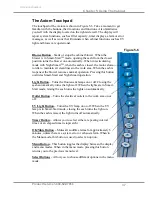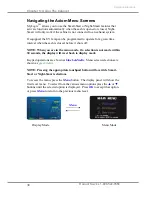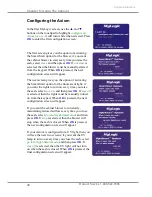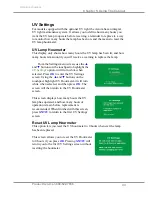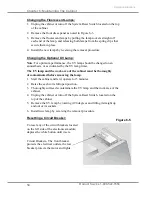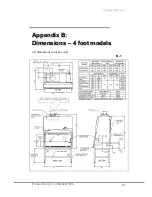
Chapter 5: Using The Cabinet
Product Service 1-800-522-7658
47
Original instructions
Work Techniques
If your work involves volatile toxic chemicals or radionuclides,
ensure that the Type C1 is connected to an operational exhaust
system, and is properly configured. Keep these materials in the center
work area, so that any air flowing over these materials will be directed
to the exhaust HEPA filter and out of the lab.
Keep all materials at least 4 inches (100 mm) inside from the sash,
and perform all contaminated operations as far to the rear of the work
area as possible.
Segregate all clean and contaminated materials in the work area.
Arrange materials to minimize the movement of contaminated
materials into clean areas.
Keep all discarded contaminated material to the rear of the work area.
Avoid moving materials or the operator's hands and arms through the
front access opening during use.
Avoid the use of an open flame. Use disposable labware or an electric
incinerator as alternatives.
Use proper aseptic technique.
Avoid using techniques or procedures that disrupt the airflow patterns
of the cabinet.
If there is a spill or splatter during use, all objects in the cabinet
should be surface decontaminated before removal. Thoroughly
disinfect the working area of the cabinet WHILE IT IS STILL IN
OPERATION, to prevent the release of contaminants from the
cabinet.
Final Purging
Upon completion of work, the cabinet should be allowed to operate
for two to three minutes undisturbed, to purge airborne contaminants
from the work area.
Unloading Materials and Equipment
Objects in contact with contaminated material should be surface
decontaminated before removal from the cabinet.
All open trays or containers should be covered before being removed
from the cabinet.
Wipe-Down
Wipe down the interior surfaces of the cabinet with a suitable
disinfectant, or 70% ethanol, and allow to dry.
Periodically lift the work surface and wipe down the area beneath it.





